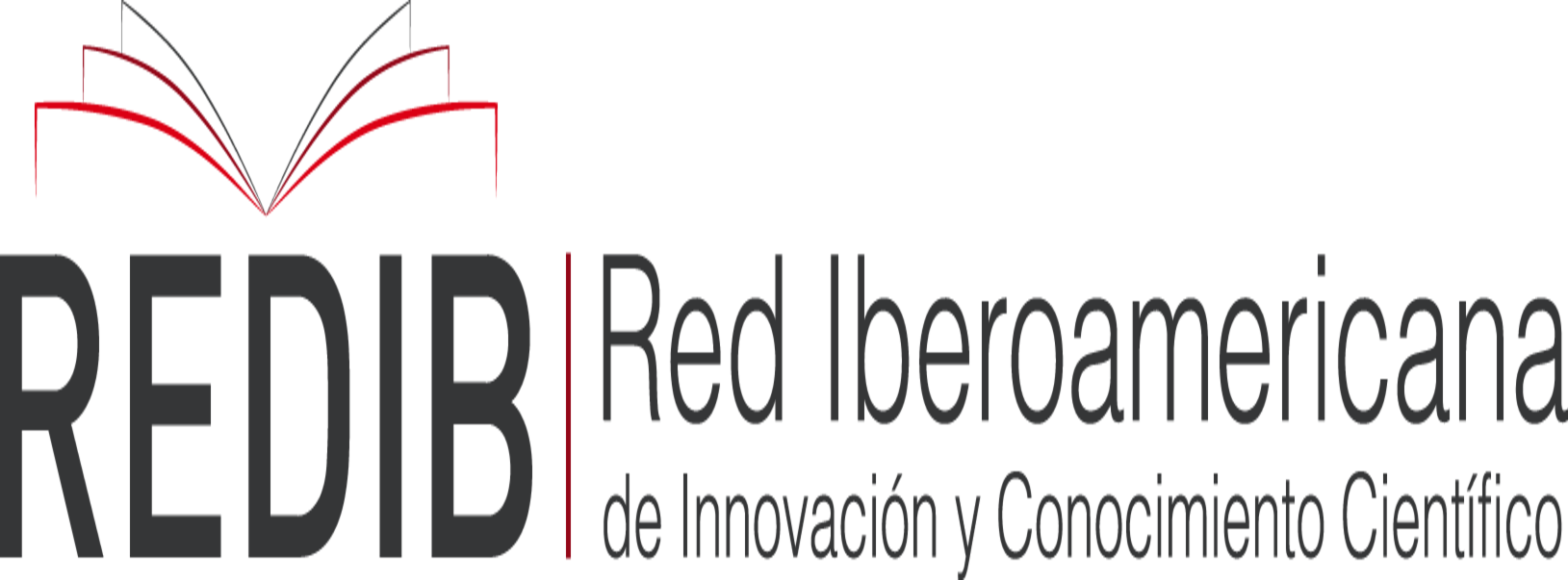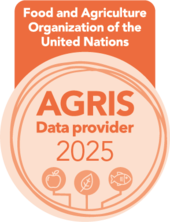Ecotoxicological effects of microplastics and adsorbed contaminants on aquatic organisms
DOI:
https://doi.org/10.17268/manglar.2019.024Resumo
Microplastic (< 5 mm) pollution have raised concern on behalf of the scientific community and the general public. Microplastic occurrence in aquatic environments and organisms have been well documented. However, it is in recent years that the ecotoxicological effects of microplastics have begun to be studied. The aim of the present study was to review, evaluate and discuss the current state of art regarding microplastic and related contaminants ecotoxicological effects in microalgae, crustaceans, molluscs and fish. The results of previous studies have proven growth inhibition and chlorophyll-a decrease in microalgae. Ingestion by small crustaceans and population reduction have been evidenced. Biomarkers in bivalves and fish have shown neurotoxic effects and oxidative stress, along with abnormal behavior. The current state of art lacks realistic parameters and microplastic concentrations to assess environmental pollution. The need for further research was discussed.
Downloads
Referências
Andrady, A.L. 2011. Microplastics in the marine environment. Marine Pollution Bulletin 62(8): 1596-1605.
Andrady, A.L. 2017. The plastic in microplastics: A review. Marine Pollution Bulletin 119(1): 12-22.
Avio, C.G.; Gorbi, S.; Milan, M.; Bennedetti, M.; Fattorini, D.; d’Errico, G.; Pauletto, M.; Bargelloni, L.; Regoli, F. 2015. Pollutants bioavailability and toxicological risk from microplastics to marine mussels. Environmental Pollution 198: 211-222.
Avio, C.G.; Gorbi, S.; Regoli, F. 2017. Plastics and microplastics in the oceans: From emerging pollutants to emerged threat. Marine Environmental Research 128: 2-11.
Barboza, L.G.A.; Vethaak, A.D.; Lavorante, B.R.B.O.; Lundebye, A.; Guilhermino, L. 2018. Marine microplastic debris: An emerging issue for food security, food safety and human health. Marine Pollution Bulletin 133: 336-348.
Barnes, D.K.A. 2002. Invasions by marine life on plastic debris. Nature 416: 808-809.
Bergami, E.; Pugnalini, S.; Vannuccini, M.L.; Manfra, L.; Faleri, C.; Savorelli, F.; Dawson, K.A.; Corsi, I. 2017. Long-term toxicity of surface-charged polystyrene nanoplastics to marine planktonic species Dunaliella tertiolecta and Artemia franciscana. Aquatic toxicology 189: 159-169.
Bergman, B.; Sandh, G.; Lin, S.; Larsson, J.; Carpenter, E.J. 2013. Trichodesmiuma widespread marine cyanobacterium with unusual nitrogen fixation properties. FEMS Microbiology Reviews 37(3): 286-302.
Besseling, E.; Wang, B.; Lürling, M.; Koelmans, A.A. 2014. Nonplastic affects growth of S. obliquus and reproduction of D. magna. Environmental Science & Technology 48(20): 12336-12343.
Botterell, Z.L.R.; Beaumont, N.; Dorrington, T.; Steinke, M.; Thompson, R.C.; Lindeque, P.K. 2019. Bioavailability and effects of microplastics on marine zooplankton: A review. Environmental Pollution 245: 98-110.
Bosker, T.; Olthof, G.; Vijver, M.G.; Baas, J.; Barmentlo, S.H. 2019. Significant decline of Daphnia magna population biomass due to microplastic exposure. Environmental Pollution 250: 669-675.
Brennecke, D.; Duarte, B.; Paiva, F.; Caçador, I.; Canning-Clode, J. 2016. Microplastics as vector for heavy metal contamination from the marine environment. Estuarine, Coastal and Shelf Science 178: 189-195.
Browne, M.A.; Galloway, T.; Thompson, R. 2007. Microplastic-an emerging contaminant of potential concern? Integrated Environmental Assessment and Management 3(4): 559-561.
Camacho, M.; Herrera, A.; Gómez, M.; Acosta-Dacal, A.; Martínez, I.; Henríquez-Hernández, L.A.; Luzardo, O.P. 2019. Organic pollutants in marine plastic debris from Canary Islands beaches. Science of the Total Environment 662: 22-31.
Canniff, P.M.; Hoang, T.C. 2018. Microplastic ingestion by Daphnia magna and its enhancement on algal growth. Science of the Total Environment 633: 500-507.
Capolupo, M.; Franzellitti, S.; Valbonesi, P.; Lanzas, C.S.; Fabbri, E. 2018. Uptake and transcriptional effects of polystyrene microplastics in larval stages of the Mediterranean mussel Mytilus galloprovincialis. Environ-mental Pollution 241: 1038-1047.
Casado, M.P.; Macken, A.; Byrne, H.J. 2013. Ecotoxicological assessment of silica and polystyrene nanoparticles assessed by a multitrophic test battery. Environment International 51: 97-105.
Chatterjee, S.; Sharma, S. 2019. Microplastics in our oceans and marine health. Field Actions Science Reports 19: 54-61.
Cho, Y.; Shim, W.J.; Jang, M.; Han, G.M.; Hong, S.H. 2019. Abundance and characteristics of microplastics in market bivalves from South Korea. Environmental Pollution 245: 1107-1116.
Cole, M.; Lindeque, P.; Halsband, C.; Galloway, T.S. 2011. Microplastics as contaminants in the marine environment: A review. Marin Pollution Bulletin 62(12): 2588-2597.
Coppock, R.L.; Galloway, T.S.; Cole, M.; Fileman, E.S.; Queirós, A.M.; Lindeque, P.K. 2019. Microplastics alter feeding selectivity and faecal density in the copepod, Calanus helgolandicus. Science of the Total Environment 687: 780-789.
Cózar, A.; Echevarría, F.; González-Gordillo, J.I.; Irigoien, X.; Úbeda, B.; Hernández-León, S.; Palma, A.T.; Navarro, S.; García-de-Lomas, J.; Ruiz, A.; Fernández-de-Puelles, M.L. 2014. Plastic debris in the open ocean. Proceedings of the National Academy of Sciences of the United States of America 111(28): 10239-10244.
Dai, Z.; Zhang, H.; Zhou, Q.; Tian, Y.; Chen, T.; Tu, C.; Fu, C.; Luo, Y. 2018. Occurrence of microplastics in the water column and sediment in an inland sea affected by intensive anthro-pogenic activities. Environmental Pollution 242: 1557-1565.
De Felice, B.; Sabatini, V.; Antenucci, S.; Gattoni, G.; Santo, N.; Bacchetta, R.; Ortenzi, M.A.; Parolini, M. 2019. Polystyrene microplastics ingestion induced behavioral effects to the cladoceran Daphnia magna. Chemosphere 231: 423-431.
De Sá, L.C.; Oliveira, M.; Ribeiro, F.; Rocha, T.L.; Futter, M.N. 2018. Studies of the effects of microplastics on aquatic organisms: What do we know and where should we focus our efforts in the future? Science of The Total Environment 645: 1029-1039.
Demirbas, A. 2010. Use of algae as biofuel sources. Energy Conversion and Management 51(12): 2738-2749.
Derraik, J.G.B. 2002. The pollution of the marine environment by plastic debris: A review. Marine Pollution Bulletin 44(9): 842-852.
Ding, L.; Mao, R.F.; Guo, X.; Yang, X.; Zhang, Q.; Yang, C. 2019. Microplastics in surface waters and sediments of the Wei River, in the northwest of China. Science of The Total Environment 667: 427-434.
Duncan, E.M.; Broderick, A.C.; Fuller, W.J.; Galloway, T.S.; Godfrey, M.H.; Hamann, M.; Limpus, C.J.; Lindeque, P.K.; Mayes, A.G.; Omeyer, L.C.M.; Santillo, D.; Snape, R.T.E.; Godley, B.J. 2018. Microplastic ingestion ubiquitous in marine turtles. Global Change Biology 25(2): 744-752.
Gallo, F.; Fossi, C.; Weber, R.; Santillo, D.; Sousa, J.; Ingram, I.; Nadal, A.; Romano, D. 2018. Marine litter plastics and microplastics and their toxic chemicals components: the need for urgent preventive measures. Environmental Sciences Europe 30: 13.
Gutow, L.; Bartl, K.; Saborowski, R.; Beermann, J. 2019. Gastropod pedal mucus retains microplastics and promotes the uptake of particles by marine periwinkles. Environmental Pollution 246: 688-696.
Gutow, L.; Eckerlebe, A.; Giménez, L.; Saborowski, R. 2016. Experimental evaluation of seaweeds as a vector for microplastics into marine food webs. Environmental Science & Technology 50(2): 915-923.
Hossain, M.S.; Sobhan, F.; Uddin, M.N.; Sharifuzzaman, S.M.; Chowdhury, S.R.; Sarker, S.; Chowdhury, M.S.N. 2019. Microplastics in fishes from the Northern Bay of Bengal. Science of The Total Environment 690: 821-830.
Jeong, C.B.; Kang, H.M.; Lee, M.C.; Kim, D.H.; Han, J.; Hwang, D.S.; Souissi, S.; Lee, S.J.; Shin, K.H.; Park, H.G.; Lee, J.S. 2017. Adverse effects of microplastics and oxidative stress-induced MAPK/ Nrf2 pathway-mediated defense mechanisms in the marine copepod Paracyclopina nana. Scientific Reports 7: 41323.
Kanhai, L.K.; Johansson, C.; Frias, J.P.G.L.; Gardfeldt, K.; Thompson, R.C.; O’Connor, I. 2019. Deep sea sediments of the Arctic Central Basin: A potential sink for microplastics. Deep Sea Research Part I: Oceanographic Research Papers 145: 137-142.
Karami, A. 2017. Gaps in aquatic toxicological studies of microplastics. Chemosphere 184: 841-848.
Kooi, M.; van Nes, E.H.; Scheffer, M.; Koelmans, A.A. 2017. Ups and downs in the ocean: Effects of biofouling on vertical transport of microplastics. Environmental Science & Technology 51(14): 7963-7971.
Lambert, S.; Scherer, C.; Wagner, M. 2017. Ecoto-xicity testing of microplastics: Considering the heterogeneity of physicochemical properties. Integrated Environmental Assessment and Management 13(3): 470-475.
Lei, L.; Wu, S.; Lu, S.; Liu, M.; Song, Y.; Fu, Z.; Shi, H.; Raley-Susman, K.M.; He, D. 2018. Microplastic particles cause intestinal damage and other adverse effects in zebrafish Danio rerio and nematode Caenorhabditis elegans. Science of The Total Environment 619-629: 1-8.
Li, J.; Green, C.; Reynolds, A.; Shi, H.; Rotchell, J.M. 2018. Microplastics in mussels sampled from coastal waters and supermarkets in the United Kingdom. Environmental Pollution 241: 35-44.
Li, J.; Zhang, K.; Zhang, H. 2018. Adsorption of antibiotics on microplastics. Environmental Pollution 237: 460-467.
Lithner, D.; Larsson, A.; Dave, G. 2011. Environmental and health hazard ranking and assessment of plastic polymers based on chemical composition. Science of The Total Environment 409(18): 3309-3324.
Lusher, A.L.; Hernandez-Milian, G.; Berrow, S.; Rogan, E.; O’Connor, I. 2018. Incidence of marine debris in cetaceans stranded and bycaught in Ireland: Recent findings and a review of historical knowledge. Environmental Pollution 232: 467-476.
Mak, C.W.; Ching-Fong, Y.K.; Chan, K.M. 2019. Acute toxic effects of polyethylene microplastic on adult zebrafish. Ecotoxicology and environmental safety 182: 109442.
Maximenko, N.; Hafner, J.; Niiler, P. 2012. Pathways of marine debris derived from trajectories of Lagrangian drifters. Marine Pollution Bulletin 65(1-3): 51-62.
Mohsen, M.; Wang, Q.; Zhang, L.; Sun, L.; Lin, C.; Yang, H. 2019. Microplastic ingestion by the farmed sea cucumber Apostichopus japonicus in China. Environmental Pollution 245: 1071-1078.
Naji, A.; Nuri, M.; Vethaak, A.D. 2018. Microplastics contamination in molluscs from the northern part of the Persian Gulf. Environmental Pollution 235: 113-120.
Ogburn, Z.L.; Vogt, F. 2017. Microalgae as embedded environmental monitors. Analytica Chimica Acta 954: 1-13.
Oliveira, P.; Barboza, L.G.A.; Branco, V.; Figueiredo, N.; Carvalho, C.; Guilhermino, L. 2018. Effects of microplastics and mercury in the freshwater bivalve Corbicula fluminea (Müller, 1774): Filtration rate, biochemical biomarkers and mercury bioconcentration. Ecotoxicology and Environmental Safety 164: 155-163.
Ory, N.C.; Gallardo, C.; Lenz, M.; Thiel, M. 2018. Capture, swallowing, and egestion of microplastics by a planktivorous juvenile fish. Environmental Pollution 240: 566-573.
Piehl, S.; Leibner, A.; Löder, M.G.J.; Dris, R.; Bogner, C.; Laforsch, C. 2018. Identification and quantification of macro and microplastics on an agricultural farmland. Scientific Reports 8: 17950.
Piñon-Colin, T. de J.; Rodriguez-Jimenez, R.; Pastrana-Corral, M.A.; Rogel-Hernandez, E.; Wakida, F.T. 2018. Microplastics on sandy beaches of the Baja California Peninsula, Mexico. Marine Pollution Bulletin 131: 63-71.
PlasticsEurope. 2018. Plastics – the Facts 2017: An analysis of European plastic production, demand and waste data. PlasticsEurope, Brussels.
Potthoff, A.; Oelschlägel, K.; Schmitt-Jansen, M.; Rummel, C.D.; Kühnel, D. 2017. From the sea to the laboratory: Characterization of microplastic as prerequisite for the assessment of ecotoxicological impact. Integrated Environmental Assessment and Management 13(3): 500-504.
Prata, J.C.; da Costa, J.P.; Lopes, I.; Duarte, A.C.; Rocha-Santos, T. 2019. Effects of microplastics on microalgae populations: A critical review. Science of The Total Environment 665: 400-405.
Provencher, J.F.; Vermaire, J.C.; Avery-Gomm, S.; Braune, B.M.; Mallory, M.L. 2018. Garbage in guano? Microplastic debris found in faecal precursors of seabirds known to ingest plastics. Science of The Total Environment 644: 1477-1484.
Purca, S.; Henostroza, A. 2017. Presencia de microplásticos em cuatro playas arenosas de Perú. Revista Peruana de Biología 24(1): 101-106.
Qiang, L.; Cheng, J. 2019. Exposure to micro-plastics decreases swimming competence in larval zebrafish (Danio rerio). Ecotoxicology and Environmental Safety 176: 226-233.
Rios, L.M.; Moore, C.; Jones, P.R. 2007. Persistent organic pollutants carried by synthetic polymers in the ocean environment. Marine Pollution Bulletin 54(8): 1230-1237.
Rist, S.E.; Assidqi, K.; Zamani, N.P.; Appel, D.; Perschke, M.; Huhn, M.; Lenz, M. 2016. Suspended microsized PVC particles impair the performance and decrease survival in the Asian green mussel Perna viridis. Marine Pollution Bulletin 111(1-2): 213-220.
Rochman, C.M.; Hoh, E.; Kurobe, T.; Teh, S.J. 2013. Ingested plastic transfers hazardous chemicals to fish and induces hepatic stress. Scientific Reports 3: 3263.
Rochman, C.M.; Kurobe, T.; Flores, I.; Teh, S.J. 2014. Early warning signs of endocrine disruption in adult fish from the ingestion of polyethylene with and without sorbed che-mical pollutants from the marine environment. Science of The Total Environment 493: 656-661.
Setälä, O.; Fleming-Lehtinen, V.; Lehtiniemi, M. 2014. Ingestion and transfer of microplastics in the planktonic food web. Environmental Pollution 185: 77-83.
Setälä, O.; Norkko, J.; Lehtiniemi, M. 2016. Feeding type affects microplastic ingestion in a coastal invertebrate community. Marine Pollution Bulletin 102(1): 95-101.
Sun, X.; Liu, T.; Zhu, M.; Liang, J.; Zhao, Y.; Zhang, B. 2018. Retention and characteristics of microplastics in natural zooplankton taxa from the East China Sea. Science of The Total Environment 604-641: 232-242.
Teng, J.; Wang, Q.; Ran, W.; Wu, D.; Liu, Y.; Sun, S.; Liu, H.; Cao, R.; Zhao, J. 2019. Microplastic in cultured oysters from different coastal areas of China. Science of The Total Environment 653: 1282-1292.
Van Cauwenberghe, L.; Claessens, M.; Vande-gehuchte, M.B.; Janssen, C.R. 2015. Microplastics are taken up by mussels (Mytilus edulis) and lugworms (Arenicola marina) living in natural habitats. Environmental Pollution 199: 10-17.
Watts, A.J.; Urbina, M.A.; Corr, S.; Lewis, C.; Galloway, T.S. 2015. Ingestion of plastic microfibers by the crab Carcinus maenas and its effect on food consumption and energy balance. Environmental Science & Technology 49(24): 14597-14604.
Welden, N.A.; Abylkhani, B.; Howarth, L.M. 2018. The effects of trophic transfer and environmental factors on microplastic uptake by plaice, Pleuronectes plastessa, and spider crab, Maja squinado. Environmental Pollution 239: 351-358.
Zhang, C.; Chen, X.; Wang, J.; Tan, L. 2017. Toxic effects of microplastic on marine microalgae Skeletonema costatum: Interactions between microplastic and algae. Environmental Pollution 220: 1282-1288.
Zhang, P.; Yan, Z.; Lu, G.; Ji, Y. 2019. Single and combined effects of microplastics and roxithromycin on Daphnia magna. Environmental Science and Pollution Research 26(17): 17010-17020.
Zhu, L.; Wang, H.; Chen, B.; Sun, X.; Qu, K.; Xia, B. 2019. Microplastic ingestion in deep-sea fish from the South China Sea. Science of The Total Environment 677: 493-501.
Downloads
Publicado
Edição
Secção
Licença

Manglar is an open access journal distributed under the terms and conditions of Creative Commons Attribution 4.0 International license









